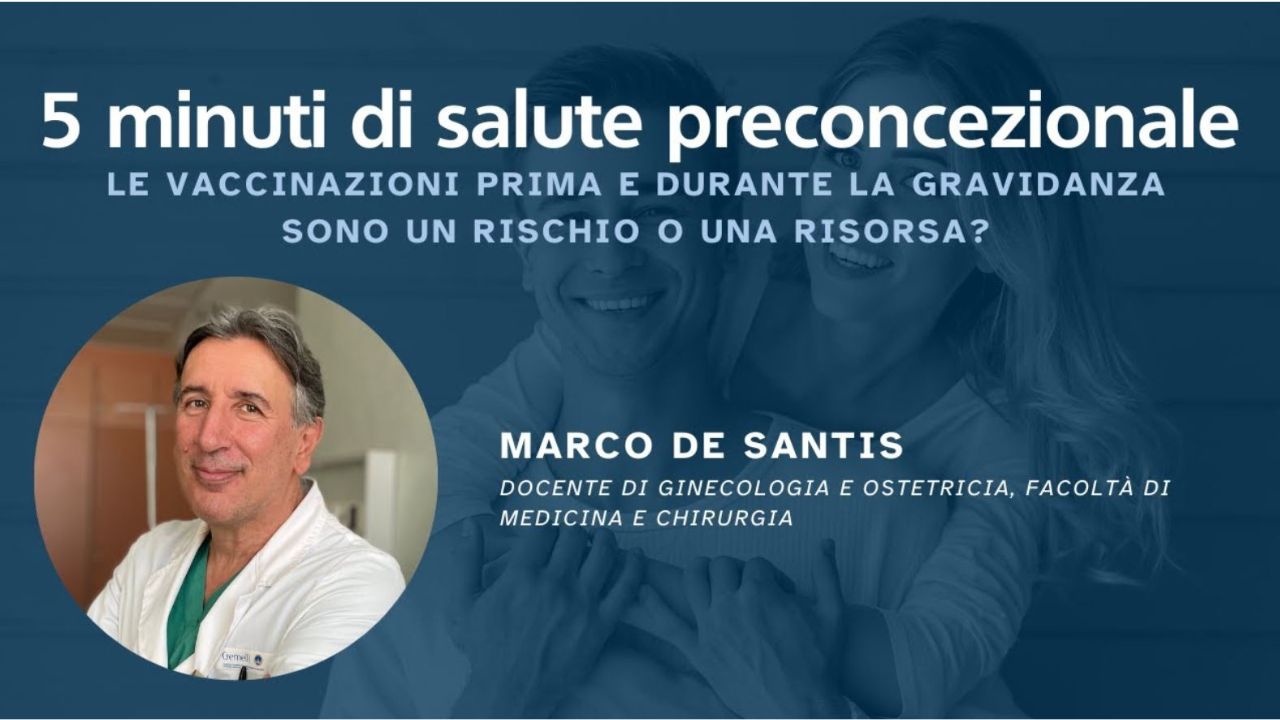Vaccinations before and during pregnancy are a risk or an asset
Prevention in health includes the set of measures useful for preventing the spread and progression of diseases and the occurrence of irreversible damage. Prevention is divided into: primary; secondary; Tertiary.
Primary prevention includes interventions aimed at hindering the onset of diseases in the population, counteracting their causes and predisposing factors. This form of prevention includes immune prophylaxis (vaccinations) in pregnancy.
As emerged from the Extraordinary National Conference of Public Health of the Siti, held in October 2023 in Cernobbio), vaccinations of pregnant women is an issue of great relevance for public health even if it is often not considered as a concrete opportunity. The important concept to know is that there is a double opportunity for health with vaccinations during pregnancy: it protects not only the health of the pregnant woman, but also the health of the unborn child. Vaccinations during pregnancy make it possible to provide early protection to the newborn, whose immune system is still developing and goes through a phase of great vulnerability to infectious diseases. Some infectious diseases are particularly dangerous if contracted during pregnancy because they can cause miscarriages or congenital anomalies of the newborn.
In anticipation of pregnancy, given the high risk of complications for the unborn child in the event of infection contracted by the mother during pregnancy, especially during the first weeks of gestation, it is necessary for women to be protected against rubella, chickenpox, mumps and measles. For chickenpox contracted in the immediate prenatal period, the risk, as well as for the unborn child, can also be very high for the mother. All women of childbearing age who do not have documentation of vaccination or positive serology for these diseases are advised to be vaccinated. It is important for every woman of childbearing age to know whether she is protected from these diseases because she has already been vaccinated or because she has contracted the disease previously.
The transfer of antibodies is minimal in the first trimester, but around 30 weeks of gestation the levels especially of some immunoglobulins reach high percentages. In a healthy full-term pregnancy, the concentration of maternal antibodies in the fetal blood reaches and exceeds the concentration in the maternal blood. In addition, the efficiency of antibody transfer depends on a few factors:
- the presence of specific maternal antibody titers for certain antigens
- immunoglobulin subclasses
- gestational age, which influences the timing of some vaccinations during pregnancy
- the presence of maternal pathologies
- placental integrity
Scientific evidence and current knowledge mean that there are several recommended vaccinations, in addition to those mentioned above, such as those for Influenza, Pertussis, Tetanus and - in recent years - also for Covid-19.
To address these challenges, it is necessary to focus on both the supply and demand of vaccinations. As far as supply is concerned, it is important to organize dedicated services for pregnant women and integrate vaccination prevention into antenatal courses; On the demand side, it is essential to raise awareness and inform pregnant women and involve doctors, especially gynecologists, in education about vaccination opportunities. We need to encourage education and health information to be brought into work rather than school contexts, promoting a culture of prevention. Improving vaccination coverage of pregnant women, therefore, is essential to protect both mother and newborn.
read more
-
Climate change and birth rateClimate change and fertility; A general topic for a particular problem that is still little studied and little investigated. We are all realizing how much climate change impacts our lives and how necessary it is to stem it, but few have carried out an analysis of the correlation between this phenomenon and the ability to procreate. We talk about it with Prof. Walter Ricciardi.
-
Welfare and birth rateThe Welfare State, developed since the nineteenth century to mitigate social risks such as unemployment and illness, has contributed significantly to the lengthening of the average life expectancy and to the change in the role of women in society. This change has influenced the traditional view of the family and has made it more difficult for women to reconcile work and family, also affecting historical birth rates. Prof. Gilberto Turati explains the current situation and the dynamics underlying it.
-
Andrological preventionWhen we talk about andrological prevention, we are probably entering a field unknown to many. Contrary to what happens for the female counterpart. In fact, the average age of the first gynecological examination is 15 years, unlike what happens in males where the first andrological specialist check-up often comes at a much older age, at the onset of clinical symptoms or when trying to get pregnant. Why is prevention important in the andrological field? This is what Dr. Carmine Bruno explains.
